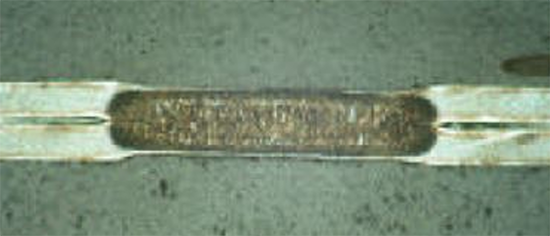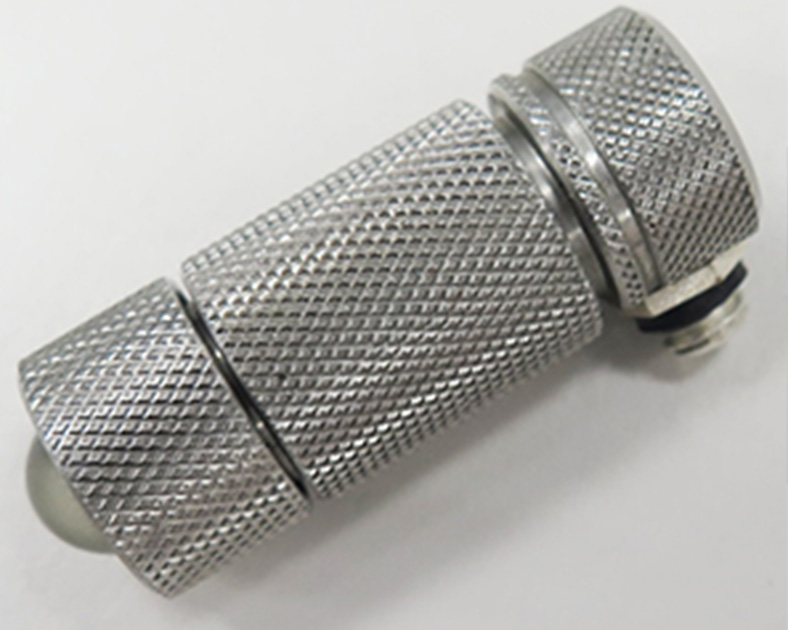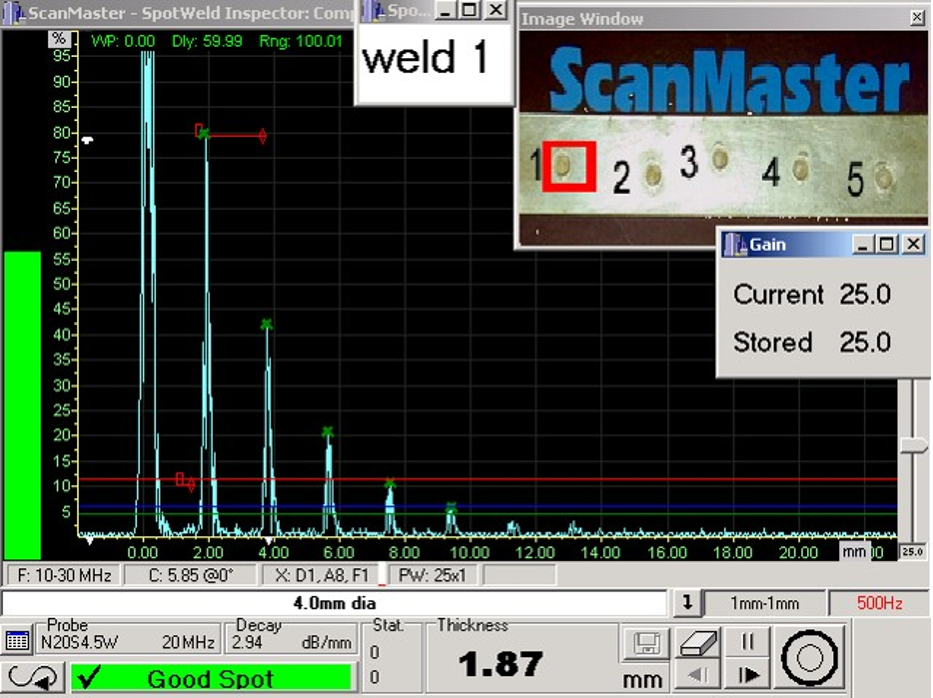Basic Knowledge of Spot Weld Testing
The process of spot weld testing
Polished section of a spot weld lens
Electric resistance spot welds are used in automotive engineering to join bodywork parts. Among others, the welding spots are checked by means of ultrasound during production.
Two or more sheets are pressed together with two copper electrodes and and subjected to an electric current in the kA range for about 200 ms. The electrical resistance creates a melt which, after cooling, forms a welding spot in the form of a lens (nugget).
Common types of flaw:
- No lens (lack of fusion)
- Lens diameter too small
- Stick joint (adhesive bond), if only the zinc coating has been melted
The appropriate probe
The test is executed in pulse-echo technique with broadband 15 or 20 MHz probes. A rubber membrane and a water delay in the probe housing enable a flexible sound coupling to the pressed-in weld spot surfaces.
Different sheet thicknesses cause different lens diameters. Thus, in each case a probe suitable for the application is used, whose transducer diameter DS corresponds to the target diameter DL of the lens. The examination probe is guided manually.
Probe for the inspection of weld spots
The test image
A-scan of a good weld spot
The evaluation of the weld spot quality is performed automatically. A good spot weld with DL ≥ DS results in an echo sequence from the back wall of the last sheet of the spot weld.
The test example in the picture shows a weld spot of two sheets with a wall thickness of 1 mm each. Here, the nominal diameter of the lens is 4 mm.
The echo sequence is made up of clear back wall echoes. The measured sound attenuation of 2.9 dB/mm indicates the coarse-grained structure of the lens. During the melting phase, the welding spot was pressed in, which can be seen from the residual wall thickness of 1.87 mm.
Based on these criteria, the quality of the weld spot is rated “good”.
With faulty welding spots, the echo sequence shows significant deviations from that of a “good” spot. Lenses that are too small show intermediate echoes from the joining plane, glued joints produce a long sequence of backwall echoes because the sound attenuation is lower due to the lack of fusion. If there is no joint at all, there is a long sequence of echoes from the top sheet.
Other types of defect (pores, burnt spots, etc.) lead to further deviating echo sequences, for which the evaluation criteria can be adapted individually.




